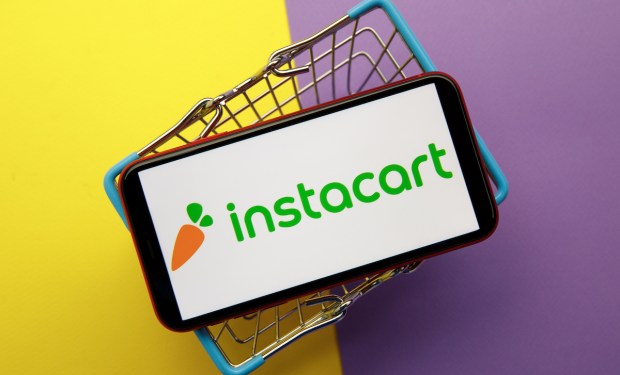Instacart GM Says Online Complexity Complicates Grocers’ Efforts to Build In-House Systems

As Instacart steps up its digital capabilities, it becomes increasingly difficult for grocers — especially smaller players — to build competitive in-house eCommerce systems.
In an interview with PYMNTS following the announcement of the aggregator’s new made-to-order feature, Rob Hill, general manager of order ahead at Instacart, said online grocery’s complexity makes it difficult for independents to build in-house platforms that can keep up, especially as aggregators keep becoming more sophisticated.
“When it comes to online grocery ordering, there are a few friction points that still exist,” Hill said. “One major challenge is that many grocery retailers still struggle to make the online shift on their own. … The thing is, if you don’t have a solid ordering system in place, it becomes tough to digitize the whole in-store fulfillment process. This has been a headache for grocers for a while.”
Hill emphasized the high degree of coordination required to sync up ordering platforms with all the “behind-the-scenes” processes that go into fulfillment. These can include managing digital inventory, picking the items, getting them to consumers’ doors and now, as of this new feature, assembling made-to-order items, among other tasks.
Yet relying on third parties such as Instacart can have significant drawbacks for grocers, requiring them to lose a portion of every sale in an industry where margins are already notoriously narrow. Additionally, grocers lose consumer loyalty to the aggregator, given that the aggregator both serves as their point of contact and retains the transaction data.
While many grocers may not have the resources to build their own systems that can compete with Instacart’s, they also do not necessarily have the freedom to opt out, as an increasing number of consumers shift their grocery spending into digital channels.
Research from the PYMNTS study “Tracking the Digital Payments Takeover: Catching the Coming eCommerce Wave,” created in collaboration with Amazon Web Services (AWS), revealed that about one in three shoppers said they are very or extremely likely to increase their online grocery purchases in the next year. Plus, these online grocery shoppers tend to spend 32% more per order than in-store customers.
Additionally, digitizing is not just about meeting consumer demand; it can also help boost efficiency in the cases of labor-intensive brick-and-mortar tasks, such as fulfilling made-to-order requests.
“In the past, managing custom-made orders at grocery stores was a lot of work,” Hill said. “Retailers had to rely on manual methods, like pen and paper ordering or spreadsheet-based order management, which are both time-consuming and inefficient.”
The process was also error-prone and added work for consumers, he said.
Yet even as grocery becomes increasingly digital, retailers cannot overlook most consumers’ ongoing preference for brick-and-mortar shopping, which enables them to pick out their own products, choosing, for instance, the avocado that is just the level of ripeness that they would like. The “Tracking the Digital Payments Takeover” study revealed that 88% of grocery transactions still occur in stores.
As such, Instacart is currently focused not on digitizing all transactions but on supplementing the brick-and-mortar experience with digital options.
“We see benefits of both [digital and physical],” Hill said. “… As consumers continue to expect personalization, look to save money, and also discover new products, an evolved digital presence helps grocers meet customer demands alongside their brick-and-mortar stores.”

